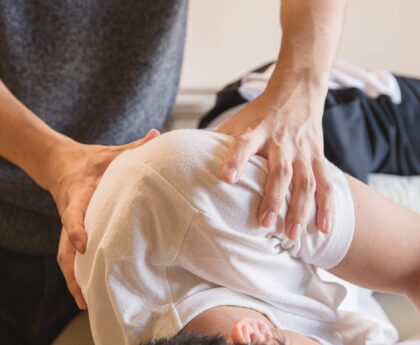Frozen shoulder motives stiffness and ache that restriction day by day things to do and sleep quality. Patients frequently are looking for remedy via non-invasive and minimally invasive options. Among a number of approaches, frozen shoulder treatment singapore has emerged as a focal factor for these searching to regain mobility and minimize soreness barring prolonged sanatorium stays. Understanding the advantages and drawbacks of every technique can assist you pick the satisfactory direction to recovery.
Understanding Frozen Shoulder
Frozen shoulder, or adhesive capsulitis, develops in three levels freezing, frozen, and thawing. During the freezing phase, ache regularly worsens and motion turns into limited. In the frozen phase, stiffness peaks, making duties like accomplishing overhead or at the back of the lower back difficult. The thawing section brings gradual enhancement in mobility. Treatment targets to shorten these degrees and restoration everyday characteristic.
Physiotherapy Approach
Physiotherapy focuses on mild stretching, strengthening exercises, and guide strategies to enhance vary of motion. Key aspects include:

- Stretching routines to goal the joint capsule
- Strength education for surrounding shoulder muscles
- Heat and bloodless remedy to control ache and inflammation
- Patient training on posture and domestic exercising applications
Benefits of physiotherapy:
- Low risk of complications
- Gradual, supervised progress
- Can be tailored to individual pain thresholds
- Manipulation Under Anesthesia (MUA)
Manipulation Under Anesthesia includes a quick technique in which the shoulder is moved via its full range whilst you’re sedated. During MUA, tight tissues are gently torn to ruin adhesions. As section of frozen shoulder cure singapore, this choice is regarded when conservative measures fail after three to six months. Advantages consist of fast enhancement in action and relief from persistent stiffness. However, possible dangers contain transient shoulder soreness, mild chance of fracture, and the want for on the spot post-procedure physiotherapy.
Comparing Outcomes
| Aspect | Physiotherapy | Manipulation Under Anesthesia |
| Recovery Time | Weeks to several months | Days to weeks |
| Pain Management | Ongoing sessions, mild pain | Post-procedure soreness |
| Risk Level | Very low | Low, but includes procedural risks |
| Cost | Moderate, per session | Higher upfront procedural cost |
| Long-Term Success | High with adherence | High with follow-up therapy |
Choosing the Right Treatment
Factors to consider when selecting an approach:
- Severity of stiffness: Mild to average regularly fits physiotherapy
- Duration of symptoms: Longer-standing instances might also advantage from MUA
- Patient tolerance: Willingness to endure anaesthesia and quick procedure
- Access to care: Availability of knowledgeable therapists and procedural facilities
- Cost considerations: Insurance and out-of-pocket expenses
Both physiotherapy and manipulation under anesthesia provide confirmed paths to overcoming frozen shoulder. Those preferring a gradual, low-risk approach regularly start with physiotherapy, whilst humans searching for swift beneficial properties after months of restricted motion might also select MUA. Discuss your situation and dreams with a certified orthopaedic professional to decide the most gorgeous frozen shoulder treatment singapore. Selecting the proper method and committing to follow-up workout routines are key to restoring shoulder mobility and resuming everyday things to do confidently.
FAQ
1. How long does it take to get better with physiotherapy?
Everyone heals at their own pace, although most individuals get better over the course of a few weeks to a few months. Going to all of your appointments and following your home workout regimen are both important for speeding up your recovery.
2. Will I require physical therapy after MUA?
Yes. Intensive physiotherapy should start right after MUA and last for many weeks to keep the progress made during the treatment and build on it.




